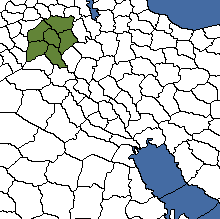Hypnos
L'Empereur
Nation Name: (What is your nation called?)
Government: (Tribe, Tyranny, Republic. etc)
Population: (How many people live in your nation. Please be reasonable)
Capital: (Where does your government operate from?)
History: (Brief overview of the formation of your nation)
Culture: (Brief overview of your people and their traditions)
Religion: (What kind of deities, if any, does your nation believe in?)
Location: (Six provinces are allowed for a starting nation. If possible, please provide a map)
Other: (Any other details you’d live to add)
Government: (Tribe, Tyranny, Republic. etc)
Population: (How many people live in your nation. Please be reasonable)
Capital: (Where does your government operate from?)
History: (Brief overview of the formation of your nation)
Culture: (Brief overview of your people and their traditions)
Religion: (What kind of deities, if any, does your nation believe in?)
Location: (Six provinces are allowed for a starting nation. If possible, please provide a map)
Other: (Any other details you’d live to add)











